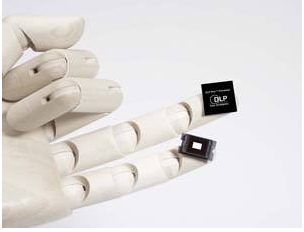In the past, people with blind eyes were only able to see the light through organ transplant surgery. However, the latest research has developed a microchip that can be implanted into the brain, allowing images and sounds from outside to bypass the eyes and ears and communicate directly to the brain to help patients recover their vision and hearing. Invented by researchers at Rice University in the United States, the chip is a flat microscope "FlatScope" that can be placed in the brain and weighs only 0.2 grams and is 1/5000 the size of a conventional microscope. FlatScope is able to monitor and stimulate neurons, for example, when the brain needs to receive a specific image, it stimulates the corresponding neurons. That is to say, FlatScope can convert visual information into a digitally encoded package, which is directly transmitted to the brain, allowing the brain to receive external images, but the process does not have to go through the eyes. On the other hand, in the past, scientists have developed techniques for stimulating the activation of neurons to allow scientists to observe brain activity. Similarly, FlatScope can monitor the response of different neurons to images on the surface of the brain. Although the technique of reading nerve signals with probes like this has been used to treat Parkinson's disease and epilepsy in the past, the researchers pointed out that the most advanced probes currently have only 16 electrodes, which greatly limits the human brain. Activity research. In contrast, FlatScope can monitor and stimulate thousands of neurons in the cerebral cortex at a time, and the scale of observation is much larger than before. In addition to monitoring more neurons than in the past, FlatScope can go deeper into the brain, study how we deal with the senses, and even control sensory input. In addition, the neurons observed by FlatScope have also evolved from planar to solid in the past. "Our microscopes can capture three-dimensional images, so we can see not only the surface but also a certain depth," the researchers explained. "Now we don't know where the limit is, but we hope to see the tissue is 500 microns deep." The researchers point out that such observations allow them to reach dense layers of the cortex, which is where most brain computing processes take place, consisting of many neuronal connections. FlatScope is part of the US Department of Defense's DARPA program, which provides a total of $65 million to create a high-resolution neural interface. Rice University received a total of $4 million over four years, with the goal of developing an optical soft and hard interface that helps patients respond to sight and sound. However, FlatScope is still in its infancy, and is currently only tested on artificial fluorescent materials and needs to be powered by wires to transmit data. However, the scale of its observations is clear enough to observe individual neurons and to keep up with the speed of brain activity. The researchers said their next step was to test the system on experimental rats. On the one hand, it is necessary to test the safety of the system in the human body. On the other hand, it is necessary to find a way to activate the activated neurons, wirelessly power the micro microscope and download the data. It is expected that human trials will begin within 4 years. SHENZHEN CHONDEKUAI TECHNOLOGY CO.LTD , https://www.szfourinone.com